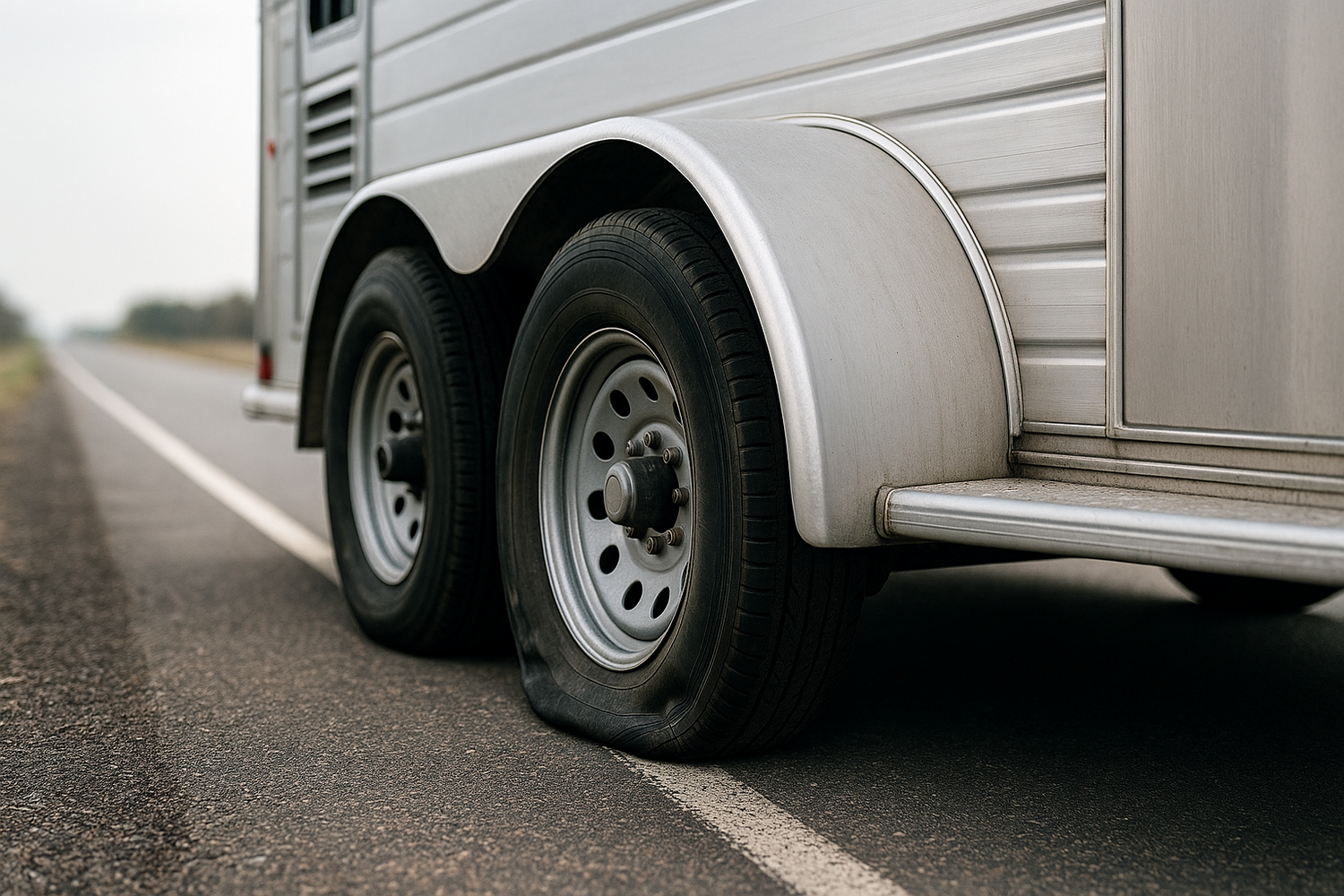When it comes to maintaining your trailer, understanding the role of trailer bearings is paramount. These small yet vital components are responsible for the smooth operation of your trailer's wheels. Without the right bearings, your trailer could face serious issues, leading to costly repairs or even accidents on the road.
Trailer bearings are designed to support the weight of the trailer while allowing the wheels to rotate freely. They reduce friction between the moving parts, ensuring that the wheels turn smoothly and efficiently. There are various types of trailer bearings, including roller bearings and ball bearings, each serving a specific purpose based on the trailer's design and load capacity.
Choosing the correct bearings involves several factors: the trailer's weight, the type of load being carried, and the intended use (such as recreational or commercial). Additionally, proper installation and maintenance of trailer bearings are crucial for preventing catastrophic failure events. Regular checks on the bearings can help identify wear and tear, which is essential for enhancing safety on the road.
By investing time in understanding and selecting the right trailer bearings, you can significantly improve your towing experience. This proactive approach not only ensures optimal performance but also serves as a safety measure. Tow with peace of mind, knowing that trailerwatchdog is standing guard.
Types of Trailer Bearings Available on the Market

Understanding the various types of trailer bearings available on the market is crucial for making an informed decision when equipping your trailer. Each type of bearing offers unique benefits and is tailored to specific applications. Here are the most common types:
- Ball Bearings: These are the most widely used type of trailer bearings. Ball bearings consist of small spherical balls that allow for smooth rotation with minimal friction. They are suitable for light to medium loads and are often found in smaller trailers.
- Roller Bearings: Unlike ball bearings, roller bearings use cylindrical rollers to distribute weight more evenly across the surface. This design allows them to handle heavier loads, making them ideal for larger trailers that carry substantial cargo.
- Needle Bearings: A subtype of roller bearings, needle bearings contain long, thin rollers, which provide a larger contact area and reduce friction. They are often utilized in applications where space is limited but high load capacity is required.
- Trailer Hub Assemblies: These are pre-assembled units that include the bearing, seals, and sometimes even the spindle. They simplify the installation process and are commonly used in DIY trailer projects for ease and convenience.
- Sealed Bearings: These bearings are designed with built-in seals that prevent dirt and moisture from entering, enhancing durability and reducing maintenance requirements. They are particularly beneficial for trailers exposed to harsh environments.
When selecting the type of trailer bearing, consider factors like the weight of your trailer, the type of loads you will carry, and your maintenance preferences. Making the right choice can significantly affect your trailer's performance and longevity.
How to Determine the Right Size of Trailer Bearings

Choosing the appropriate size of trailer bearings is essential for ensuring your trailer operates efficiently and safely. An ill-fitting bearing can lead to premature wear and catastrophic failures. Here’s how to determine the right size:
- Identify the Trailer Axle: Start by knowing the specifications of your trailer axle. This includes the axle diameter, which is usually stamped on the axle itself. Common sizes are 1 inch, 1-1/16 inches, and 1-1/2 inches.
- Inspect the Old Bearings: If you’re replacing existing bearings, remove them and check for any identifying numbers or markings. These numbers can be cross-referenced with bearing charts to find the exact size needed.
- Measure the Inner and Outer Diameter: Use a caliper to measure the inner and outer diameters of the bearings. The inner diameter fits onto the axle, while the outer diameter fits into the trailer hub. Accurate measurements are crucial for compatibility.
- Check the Width: The width of the bearing is equally important. Measure the thickness of the old bearing or consult manufacturer specifications to ensure you get the correct width for a snug fit.
- Consult Manufacturer Specifications: When in doubt, refer to your trailer's manufacturer guidelines. They often provide recommended bearing sizes based on the model and configuration of the trailer.
By following these steps, you can confidently select the right size of trailer bearings, ensuring optimal performance and longevity for your trailer. Proper installation and maintenance will further enhance your trailer's reliability on the road.
Key Features to Consider When Selecting Trailer Bearings
When selecting trailer bearings, it's crucial to consider several key features that can impact performance, durability, and safety. Understanding these features ensures you choose the best bearings for your specific needs:
- Material: Trailer bearings are typically made from materials such as steel or ceramic. Steel bearings are durable and resistant to wear, while ceramic bearings offer lower friction and increased heat resistance, making them ideal for high-performance applications.
- Sealing: Look for bearings with effective seals to prevent dirt, dust, and moisture from entering. Double-lip seals provide superior protection and longevity, ensuring that the lubricant stays in place and the bearings operate smoothly.
- Load Rating: Each bearing has a maximum load rating, which dictates how much weight it can handle. Ensure that the bearings you choose can support the weight of your trailer and any cargo you plan to transport.
- Size Compatibility: As discussed earlier, it’s essential that the bearings fit your trailer’s axle and hub specifications. Verify that the inner and outer diameters, as well as the width, meet your trailer’s requirements.
- Maintenance Requirements: Some bearings are designed to be maintenance-free, while others may require regular lubrication. Consider how much maintenance you are willing to perform and choose accordingly.
By carefully considering these features, you can select trailer bearings that enhance your trailer's performance and reliability, ensuring a safer towing experience.
Installation Process for Trailer Bearings Explained

The installation process for trailer bearings is a crucial step that directly affects the performance and longevity of your trailer. Here’s a step-by-step guide to help you through the installation:
- Gather Necessary Tools: Before starting, ensure you have the required tools, including a bearing puller, grease, a torque wrench, and safety gloves.
- Remove the Wheel: Begin by lifting the trailer with a jack and securing it with jack stands. Remove the wheel by loosening the lug nuts and taking the wheel off the hub.
- Access the Hub: Once the wheel is removed, take off the hub by removing the retaining nut. This may require a socket wrench. Be cautious as the hub may be heavy.
- Remove Old Bearings: Carefully remove the old bearings from the hub and axle. If they are stuck, a bearing puller can help. Inspect the bearing races for any signs of wear or damage.
- Clean the Hub: Clean the inside of the hub thoroughly to remove old grease, dirt, and debris. Ensure it’s completely dry before proceeding.
- Install New Bearings: Apply a generous amount of grease to the new bearings. Insert the inner bearing into the hub, followed by the outer bearing. Ensure they are seated correctly in their respective races.
- Reassemble the Hub: Replace the hub onto the axle, secure it with the retaining nut, and tighten it to the manufacturer’s specifications using a torque wrench.
- Reattach the Wheel: Finally, place the wheel back onto the hub, secure it with the lug nuts, and lower the trailer back to the ground.
By following these steps meticulously, you can ensure a successful installation of your trailer bearings, which is essential for safe and efficient towing.
Maintaining Your Trailer Bearings for Longevity

Proper maintenance of your trailer bearings is essential for ensuring their longevity and preventing costly failures. Regular maintenance not only extends the life of the bearings but also enhances the overall safety and performance of your trailer. Here are some key maintenance tips to keep in mind:
- Regular Inspections: Periodically check your trailer bearings for any signs of wear, damage, or excessive play. Look for any unusual noises while towing, as these can indicate bearing issues.
- Greasing: Keep bearings well-greased to reduce friction and heat buildup. Depending on your usage, it’s advisable to re-grease them every 1,000 miles or at least once a year. Use high-quality grease suitable for your trailer's specifications.
- Temperature Monitoring: Consider installing a monitoring system like TrailerWatchdog to keep track of axle temperatures. Elevated temperatures can indicate potential problems and allow for early intervention.
- Check Seals: Ensure that the seals around the bearings are intact and free from damage. Proper seals prevent contaminants from entering the bearing assembly.
- Cleaning: When performing maintenance, clean the bearings and hub thoroughly to remove old grease, dirt, and debris. This prevents contamination and helps in maintaining smooth operation.
By implementing these maintenance practices, you can significantly enhance the lifespan of your trailer bearings. Remember, investing time in maintenance today can save you from unexpected breakdowns tomorrow. Tow with peace of mind, knowing that TrailerWatchdog is standing guard.








